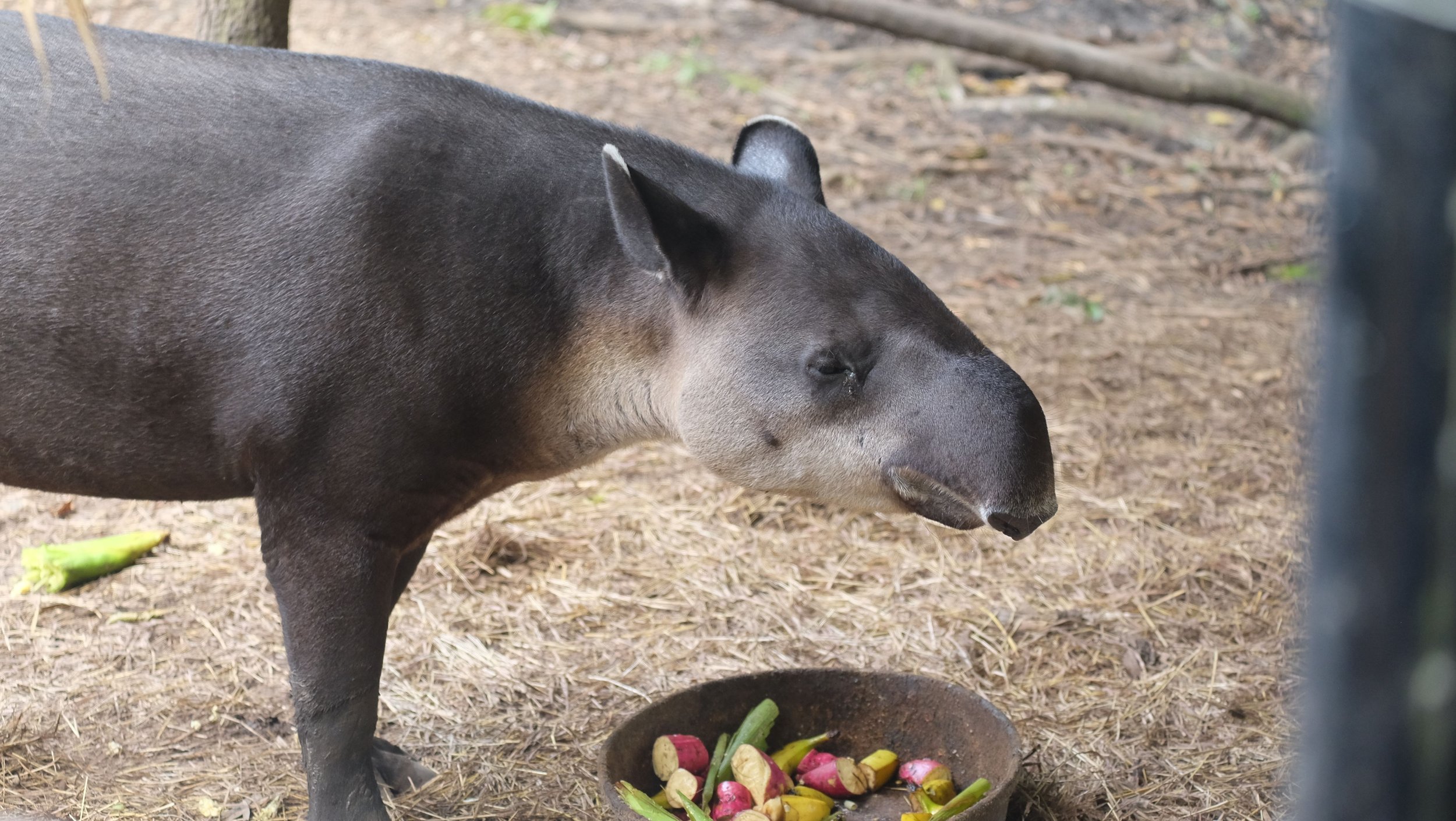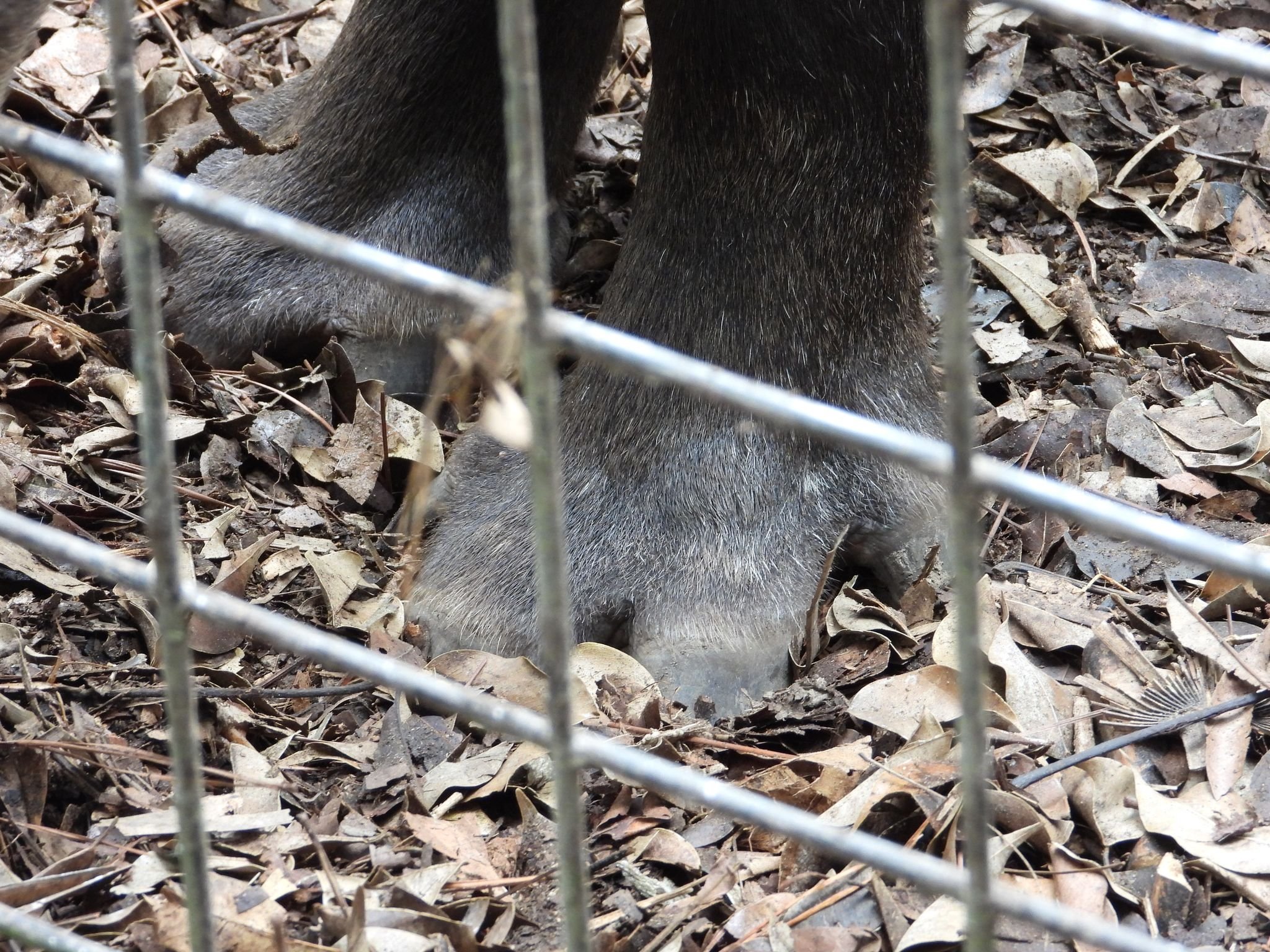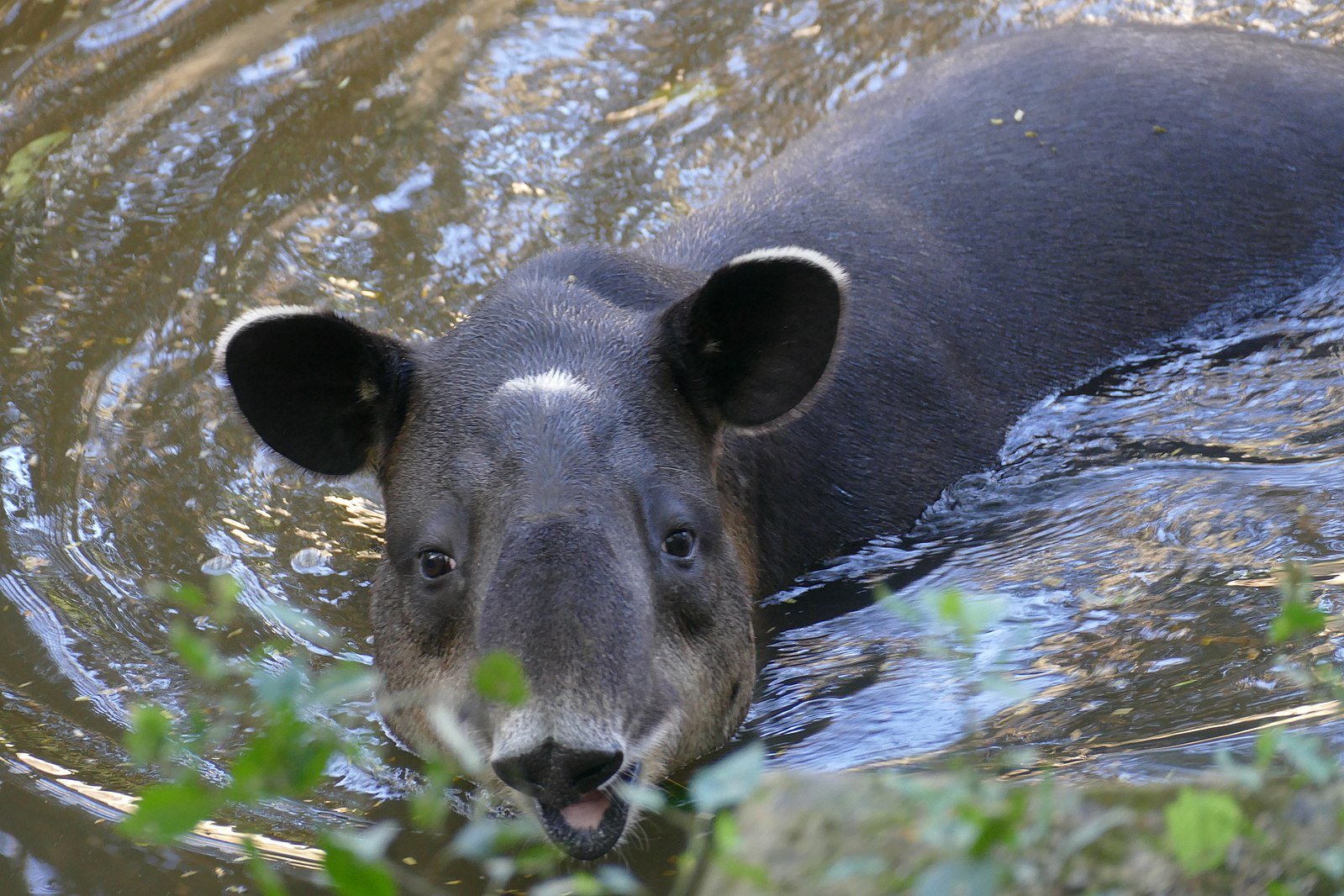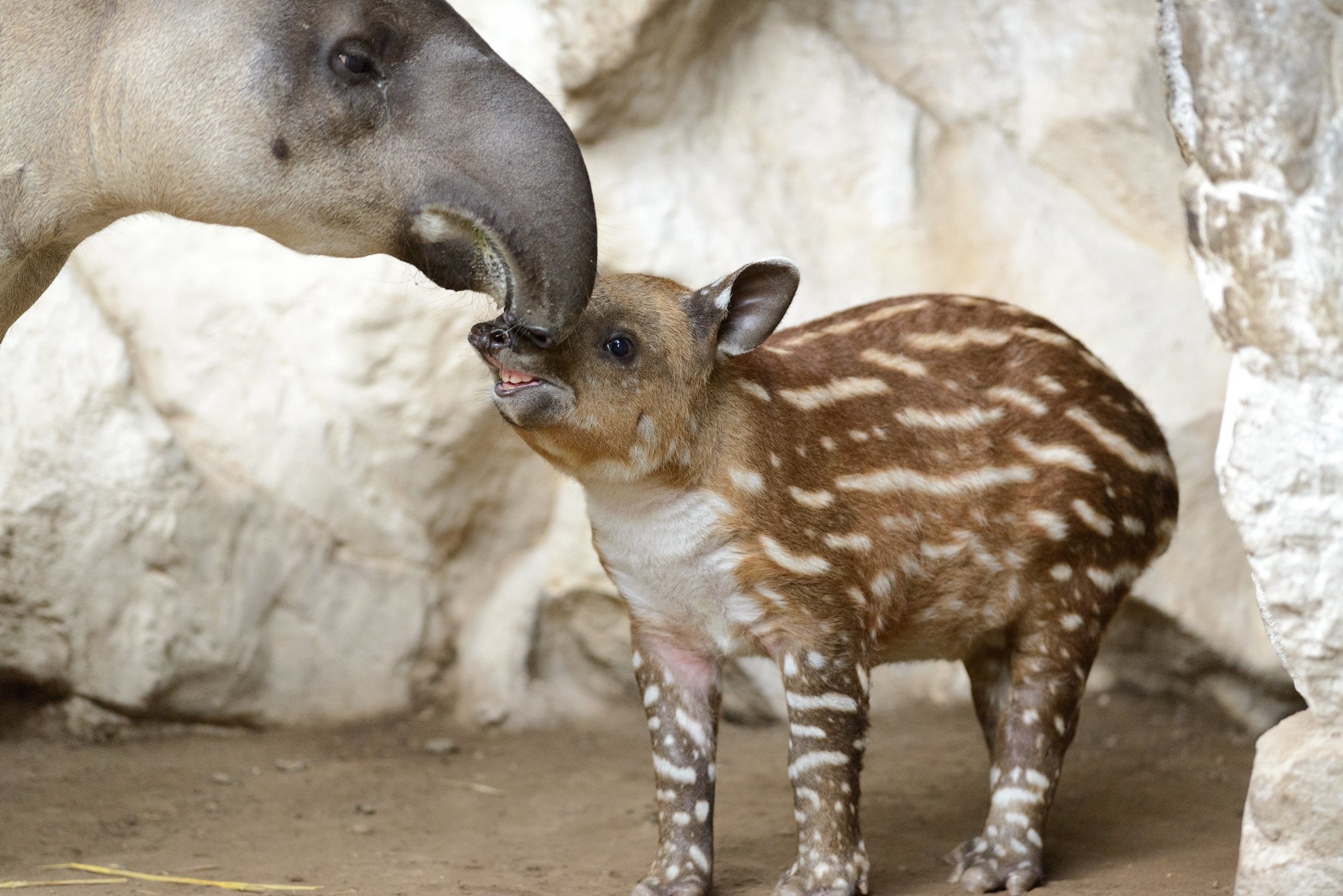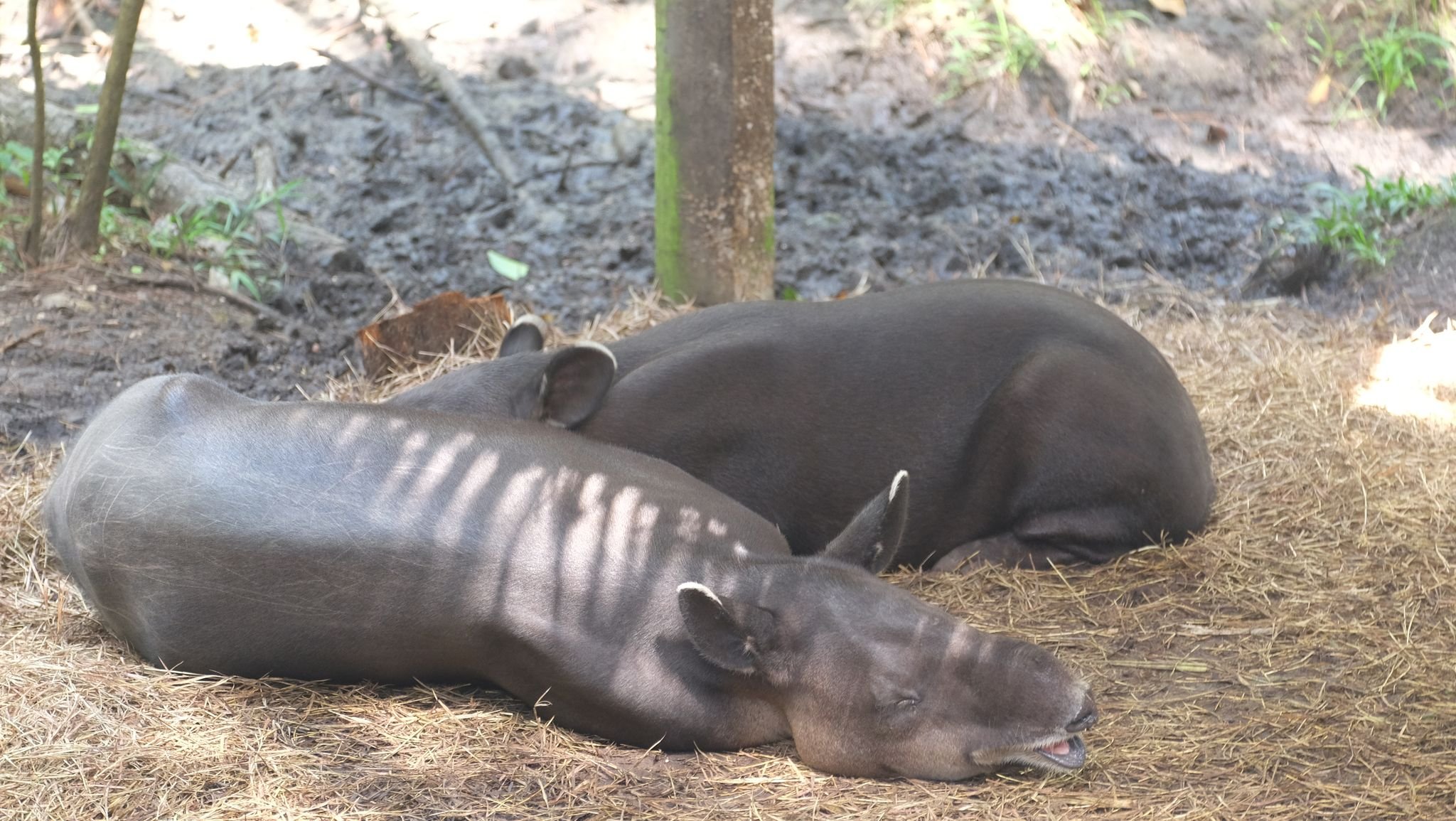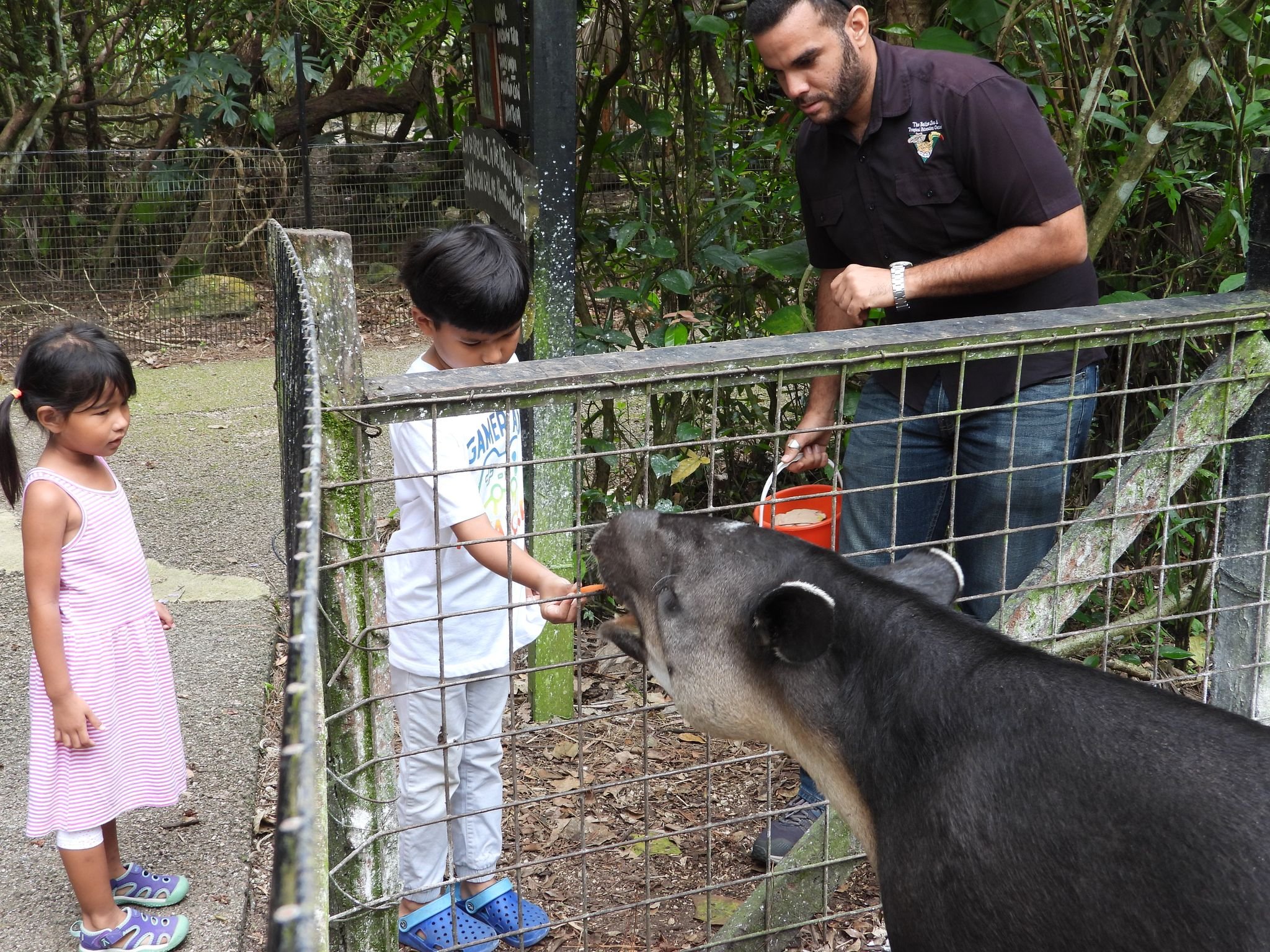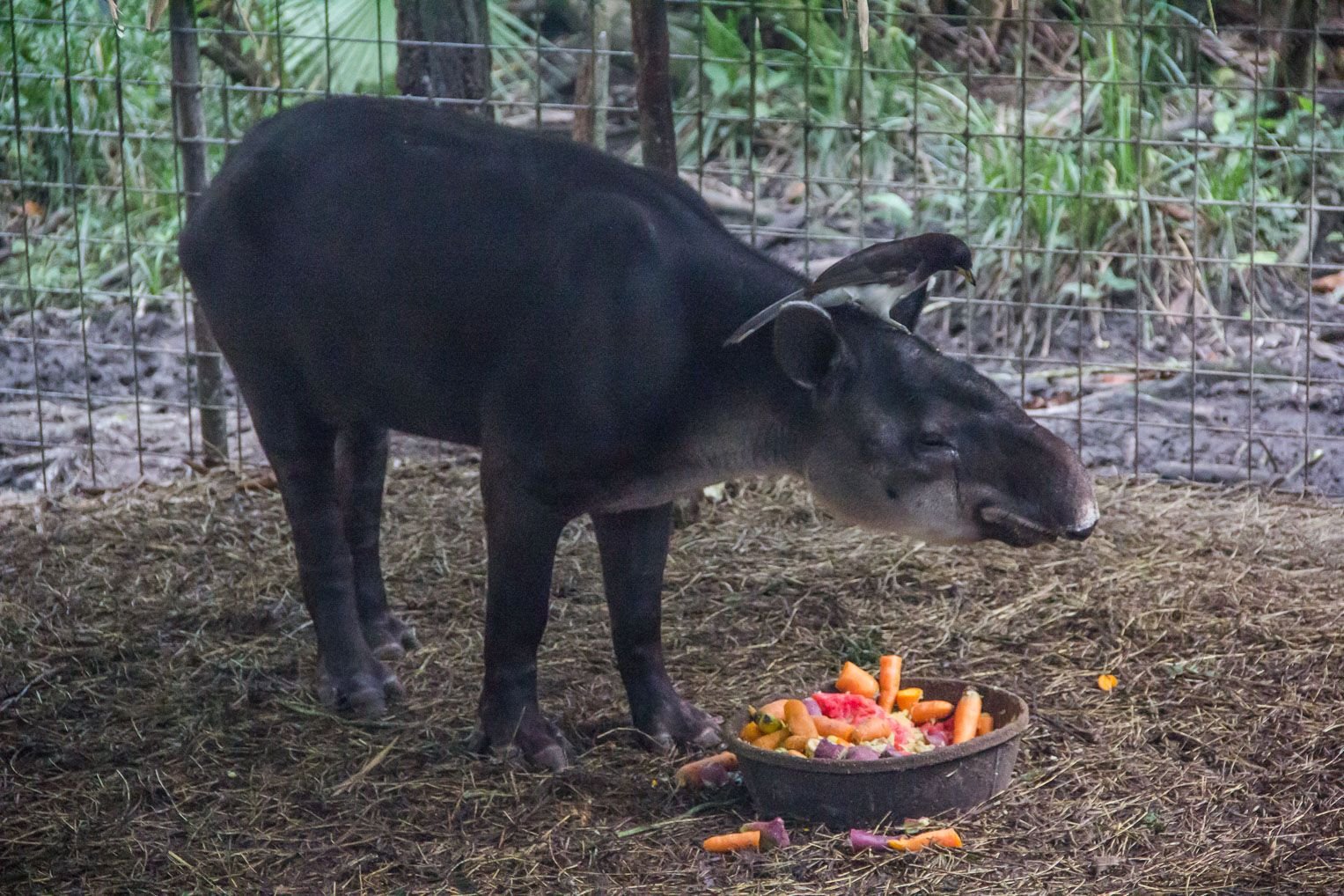The Science of Tapirs: The National Animal of Belize
WHAT IS A TAPIR?
The Central American tapir (Tapirus bairdii), also known as Baird’s tapir, is the largest terrestrial mammal of Central America. With their size, gray-brown coloration, and long, flexible snout, tapirs are among the most recognizable and unique animals of the rainforests.
A tapir at the Belize Zoo. Image by Inspire EdVentures.
Central American tapirs are dark brown or gray with lighter undersides; some individuals have light patches on their chests or foreheads. Their thick hides are covered in short, dark, bristly hairs. An adult tapir can weigh from 300 to nearly 600 pounds (136 to 272 kilograms), reach six feet (182 cm) in length, and stand up to four feet (122 cm) at the shoulder. A tapir’s most recognizable feature is its elongated nose and upper lip, which form a prehensile trunk-like snout.
The tapir is the national animal of Belize, where it is sometimes known as the “mountain cow.” However, tapirs and cows are not closely related; nor are tapirs and- as their appearance may misleadingly suggest- pigs, elephants, or anteaters. The tapir’s actual closest relatives may surprise you! Tapirs are odd-toed ungulates (members of the order Perissodactyla), making them most similar to horses and rhinoceroses.
What is an odd-toed ungulate? An ungulate is a mammal with hooves, such as a goat or deer. Most ungulates are “even-toed” members of the order Artiodactyla. In fact, tapirs, horses, and rhinoceroses are the only remaining odd-toed ungulates, though the order used to be much more widespread; the largest land mammal known to exist, Indricotherium (also called Paraceratherium), was an odd-toed ungulate found in present-day Europe and Asia. This “giraffe rhinoceros” stood 18 feet (5.5 meters) at the shoulder and weighed as much as 8,000 pounds (four tons, or over 3,600 kilograms)!
Somewhat confusingly, “odd-toed” or “even-toed” does not refer to the number of toes the animal has; tapirs, for example, have four-toed forefeet and three-toed hindfeet. Instead, the distinction is to how many toes bear the weight of the animal. In odd-toed ungulates, the number is one or three; in even-toed ungulates, the number is two or four.
The forefeet of a tapir at the Belize Zoo. A tapir’s toes are covered with hooves made of keratin. Image by Inspire EdVentures.
Though the lifespan of the Central American tapir in the wild is unknown, in captivity, tapirs have been known to live for up to 30 years! From their trunks to their hooves, tapirs are well-adapted for life in the rainforest; however, like many rainforest species, tapirs have in the modern day become threatened throughout their range.
WHERE DO TAPIRS LIVE?
The Central American tapir is one of four tapir species, including the Malay tapir (Tapirus indicus, found in Myanmar, Thailand, Malaysia, and Indonesia); the mountain tapir (Tapirus pinchaque, found in Ecuador, Peru, and Bolivia); and the lowland tapir (Tapirus terrestris, found primarily in Brazil and surrounding countries). The range of the Central American tapir stretches from southeastern Mexico through Central America to northern Colombia.
A wild Central American tapir in Belize. Image taken by Inspire EdVenture trail camera.
These tapirs prefer deep, undisturbed forest habitat, ranging from the rainforests and wetlands at sea level to mountain forests of up to 3,600 meters (11,600 feet) in elevation. They tend to avoid human settlements and forest edges, though the fragmentation of their habitat makes this increasingly difficult. (Habitat fragmentation- a process by which previously uninterrupted areas of rainforest are broken into smaller, unconnected pieces, often by construction of roads or land-clearing for agriculture- poses a threat to nearly all rainforest species.)
There are three main “strongholds” for the Baird’s tapir population. The Mayan rainforest of southern Mexico, Belize, and Guatemala is believed to hold the largest population of Central American tapirs, between 1,000 and 1,500 adult individuals. Another population, stretching from the Indio Maíz of southern Nicaragua through Costa Rica to Panama, holds between 600 and 800 adult tapirs, while the Mosquitia area of east Honduras and northeast Nicaragua may contain 500 to 600 individuals.
Central American tapir populations outside these strongholds are expected to be smaller, isolated, and likely in danger of local extinction. Overall, between 3,000 and 5,000 adult Central American tapirs are believed to exist in the wild. Though formerly extant (native) in the region, the Central American tapir is now extinct in El Salvador, and its status in Ecuador is unknown.
HOW DO TAPIRS BEHAVE?
Central American tapirs are primarily nocturnal, meaning they are most active at night. This may be an evolutionary adaptation to reduce exposure to high daytime temperatures, as the tapir’s large size may make it difficult to keep cool.
Tapirs are herbivorous (plant-eating) and, like many herbivores, spend most of their time awake foraging for food. A tapir’s diet consists mostly of leaves and fruits, which they grasp for with their flexible snouts. As the largest herbivores of Central America, tapirs are an essential part of the rainforest ecosystem as they spread seeds from their meals throughout their range.
Tapirs are often found near sources of fresh water, such as rivers or lakes. They are good swimmers and can even use their snouts as snorkels! During the day, tapirs often sleep in “wallowing holes” filled with several inches of cool water or mud.
A Central American tapir swimming at Aluxes Palenque, Chiapas, Mexico. Image by Bernard Dupont.
Tapirs are largely solitary, though the territories of adult tapirs often overlap; they are rarely aggressive when meeting in the wild and will even forage together. Central American tapirs have no set breeding season, though breeding may be more common closer to the rainy season. They are believed to form monogamous (exclusive) breeding pairs, though the reclusive nature of the species can make studies of wild behavior difficult.
Tapir young are born up to 13 months (400 days) after mating. Usually, only one tapir is born per litter. Tapirs weigh around 21 pounds (9.5 kilograms) at birth, with lighter brown coloring striped with white. Tapir parents are altricial, meaning that they care for their young after birth; in fact, a young tapir may remain with both parents for up to two years!
A young Baird’s tapir with its mother, showing the difference in coloration. Image by Eric Tilby.
Due to their size, adult tapirs have few natural predators, though they are occasionally preyed on by ambitious pumas and jaguars. Though the tapir’s size may make it appear slow and sluggish, tapirs are more than capable of running or even swimming to escape predators. Tapirs have small eyes and a poor sense of sight, but have acute senses of hearing and smell, which they use to detect both threats and food.
ARE TAPIRS ENDANGERED?
The IUCN Red List of Threatened Species has categorized the Central American tapir as Endangered since 2002. The global population of Central American tapirs has declined an estimated 50% over the past 33 years, and is projected to decline as much as 70% further without intervention.
The largest threats these tapirs face are habitat loss, habitat fragmentation, and hunting or accidental kills. According to a report by the IUCN, rainforest coverage in Central America has decreased by up to 70% over the past forty years. Rainforest clearing for large-scale agriculture or construction, such as for roads or dams, continues to threaten the vulnerable species who depend on undisturbed environments.
A related but distinct problem is that of habitat fragmentation; that is, breaking previously continuous areas of rainforest into smaller, unconnected pieces. The isolated tapir populations resulting from this fragmentation are increasingly vulnerable to local extinction.
Central American tapirs at the Belize Zoo. Image by Inspire EdVentures.
Despite legal protection throughout their range, Central American tapirs are also threatened by hunting, mostly for food instead of trophies or trade. Tapirs are additionally frequent victims of accidental killings through vehicle collisions. A study published in the Tropical Conservation Science journal found fourteen recorded tapir deaths from vehicle accidents on a single stretch of road in Belize between June 2008 and December 2012, nearly half of which involved vehicles traveling above the road’s speed limit.
However, researchers and conservationists in Belize were able to combat road deaths for tapirs through placing reflective “Tapir Crossing” signs along the roads, warning drivers of tapir presence in the area. Coupled with a campaign to increase public attention for this issue, researchers succeeded in reducing tapir deaths for vehicle collisions to only two along the same stretch of road over the ensuing three years.
A “Tapir Crossing” sign on display at the Belize Zoo tapir enclosure. These signs are a common sight along Belize’s roads to reduce potentially deadly collisions between drivers and endangered tapirs. Image by Terence Faircloth.
Habitat conservation, such as through legislation, wildlife reserves, national parks, and protected indigenous areas, is essential to the preservation of the Central American tapir and many other rainforest species. The success of the Belizean vehicle collision study also highlights the benefit of public education campaigns, including those of conservation groups and zoos. Without these measures and increasing protections, the Central American tapir may become Critically Endangered due to habitat and population loss within its next few generations.
Jamal Andrewin-Bohn [right], Belize Zoo Conservation Program Manager, supervises zoo visitors in feeding treats to Indy the tapir. Animal ambassadors like Indy help foster connections between zoo visitors and Belize’s natural wildlife. Image by Inspire EdVentures.
WHAT IS NATIONAL TAPIR DAY?
In April 1983, a young tapir calf was found near the Sibun River of Belize. The tapir was brought to the newly opened Belize Zoo and Tropical Education center, then only three months old, and nursed back to health by Belize Zoo founder Sharon Matola. Named April for the month of her discovery, the tapir quickly became a fixture of the fledgling Belize Zoo.
The Central American tapir is the national animal of Belize; however, due to the tapir’s shy nature, many Belizean residents knew little about them. April became a mascot for her species, teaching Belize Zoo visitors from around the world all about the tapir. April’s birthday, celebrated on April 27, was a major event for the zoo and propelled April into fame as an animal ambassador! April was even featured in documentary films and on CNN.
In 2012, April’s stardom was recognized by the Prime Minister of Belize. April 27 became National Tapir Day. Though April died the next year in 2013 at age 30, National Tapir Day continues to be recognized in Belize and celebrated each year by the Belize Zoo. April’s story, and the stories of the Belize Zoo’s other resident tapirs, helps teach the public about the struggles and successes of Belize’s amazing national animal. (Click here to learn more about April the tapir at the Belize Zoo!)
A tapir at the Belize Zoo enjoys a meal of fruits and vegetables with an avian guest. Image by Inspire EdVentures.
Interested in learning more about the Central American tapir and Belize’s other unique wildlife? Schedule a virtual tour with Inspire EdVentures and the Belize Zoo at Belize Zoo Live!
REFERENCES AND FURTHER READING
Baird’s Tapir at the Belize Zoo
Bigalke, R.C.. "perissodactyl". Encyclopedia Britannica, https://www.britannica.com/animal/perissodactyl.
Garcìa, M., Jordan, C., O'Farril, G., Poot, C., Meyer, N., Estrada, N., Leonardo, R., Naranjo, E., Simons, Á., Herrera, A., Urgilés, C., Schank, C., Boshoff, L. & Ruiz-Galeano, M. 2016. Tapirus bairdii. The IUCN Red List of Threatened Species 2016: e.T21471A45173340. https://dx.doi.org/10.2305/IUCN.UK.2016-1.RLTS.T21471A45173340.en.
Wells, J. 2009. "Tapirus bairdii" (On-line), Animal Diversity Web.https://animaldiversity.org/accounts/Tapirus_bairdii/

